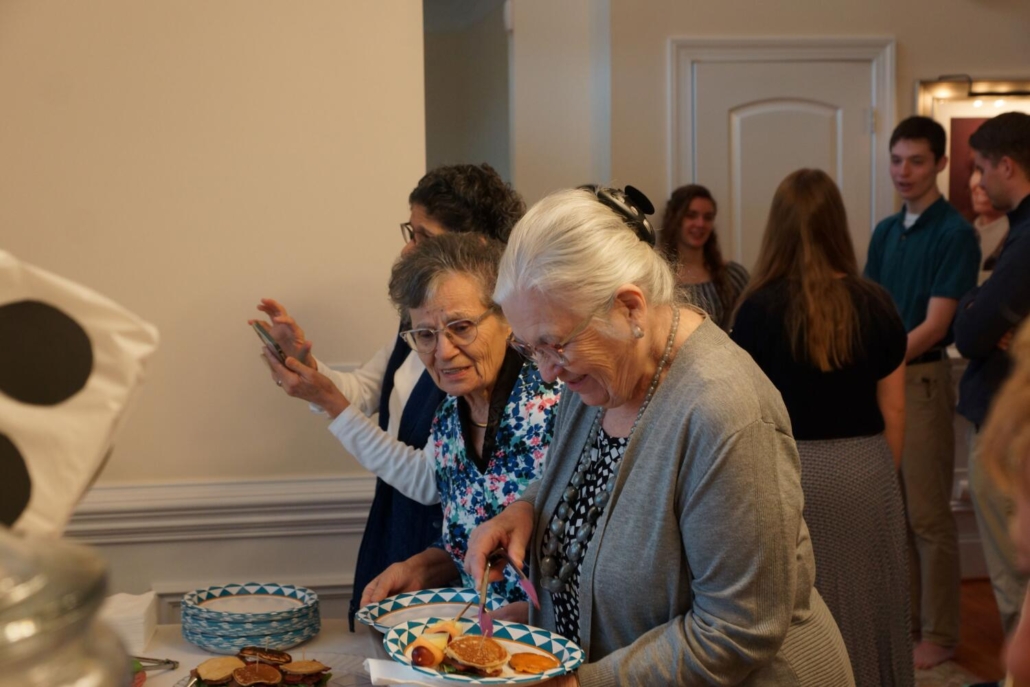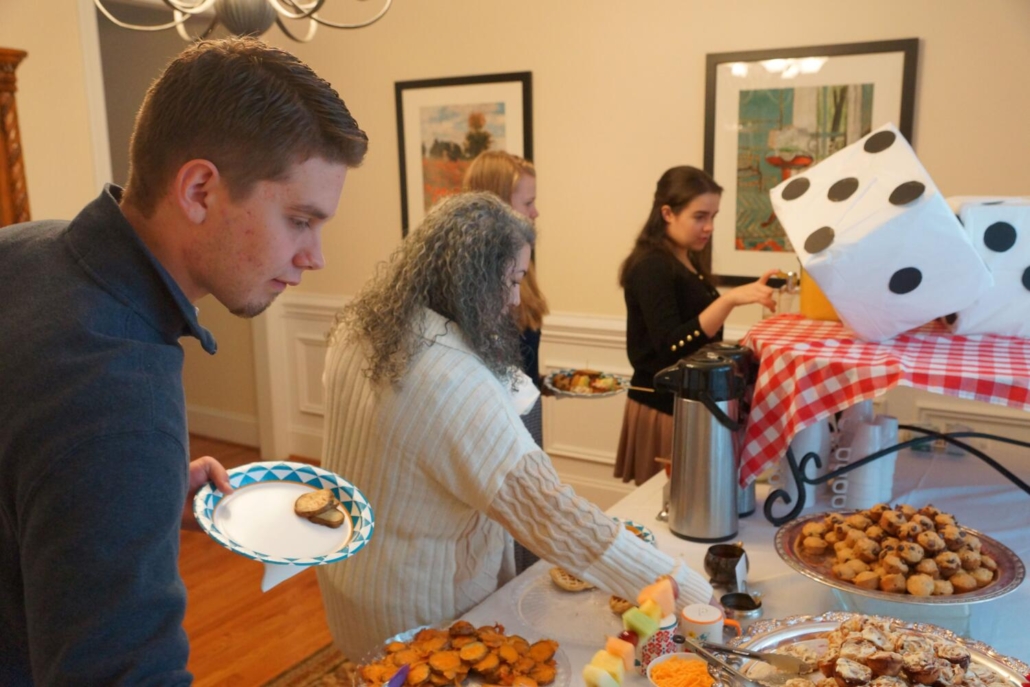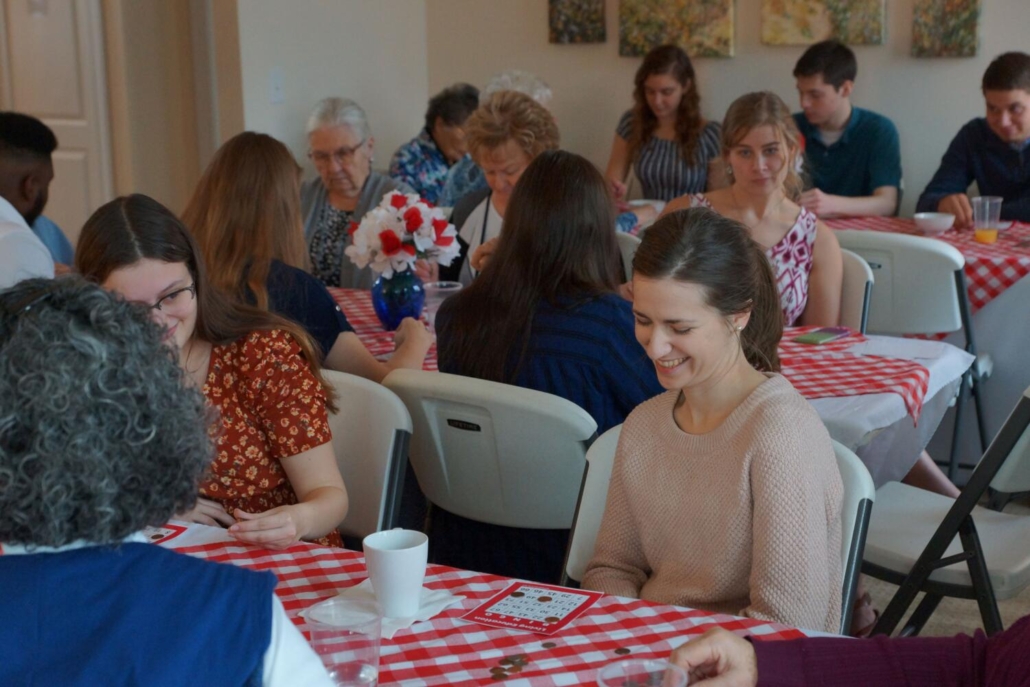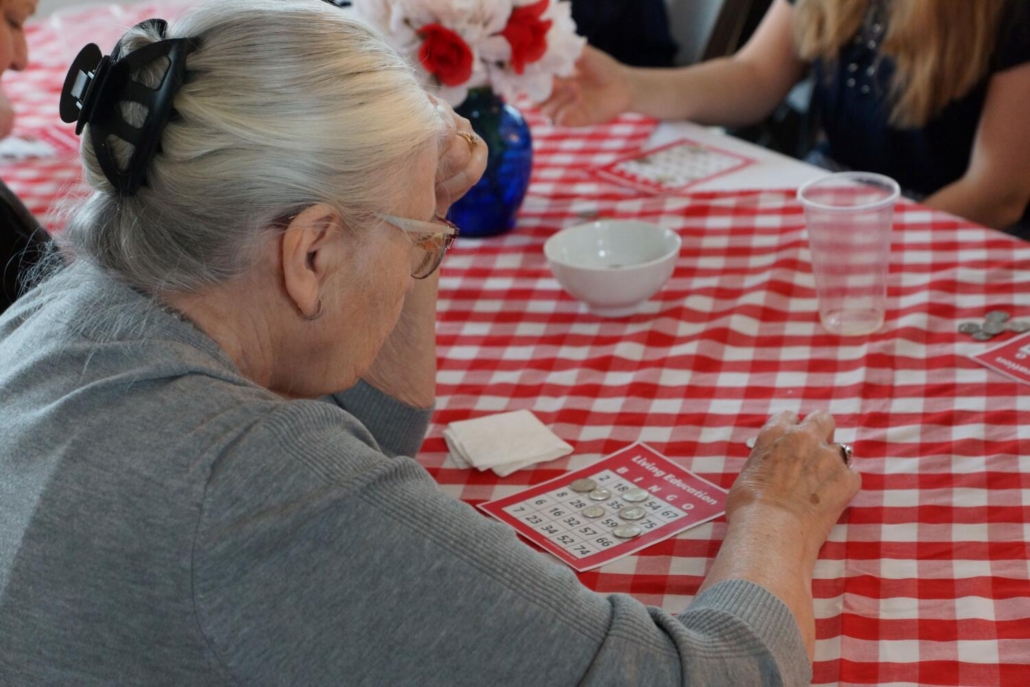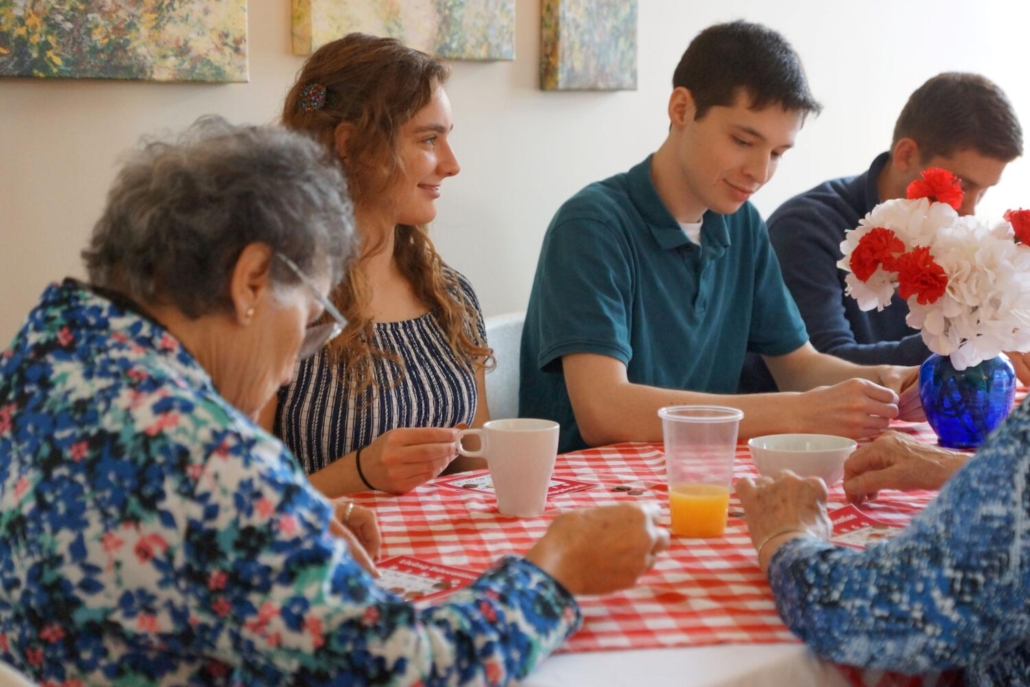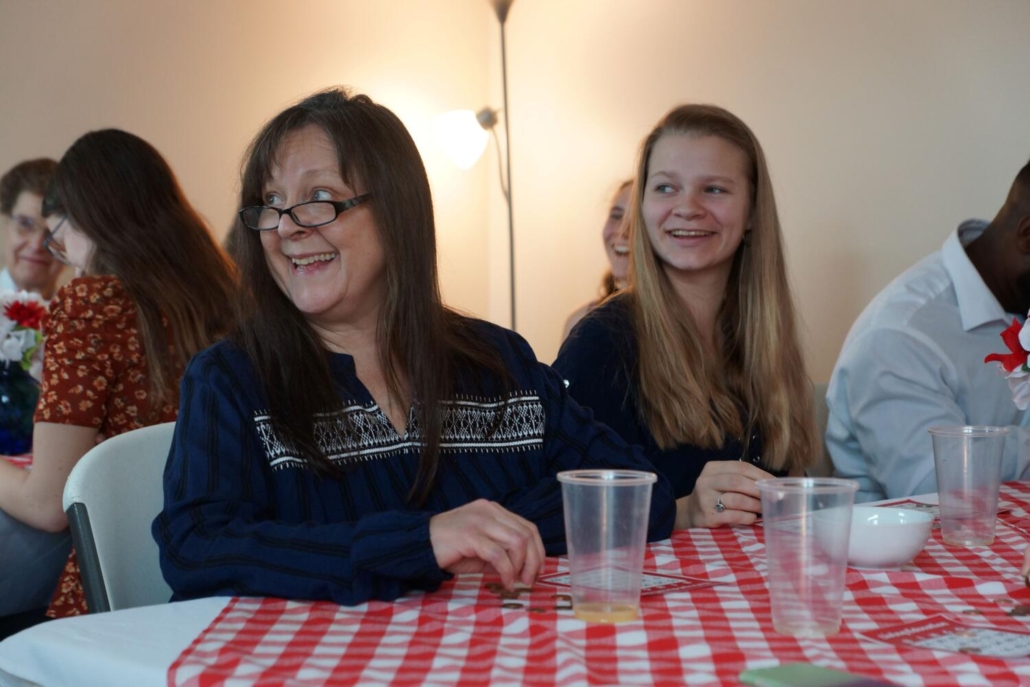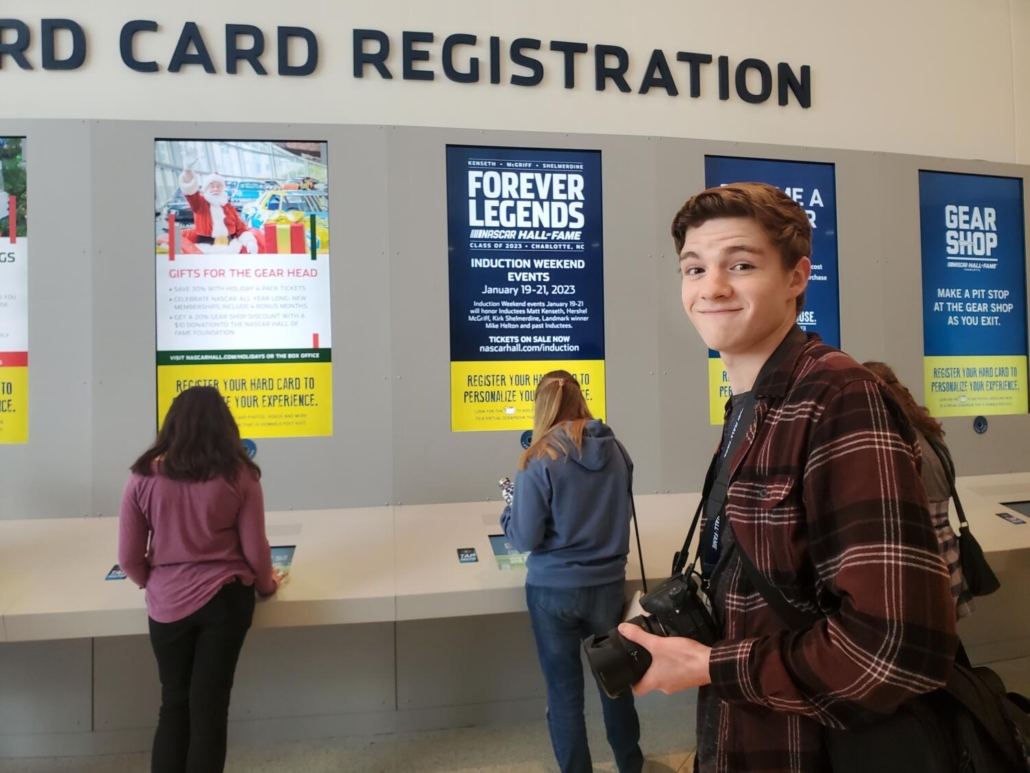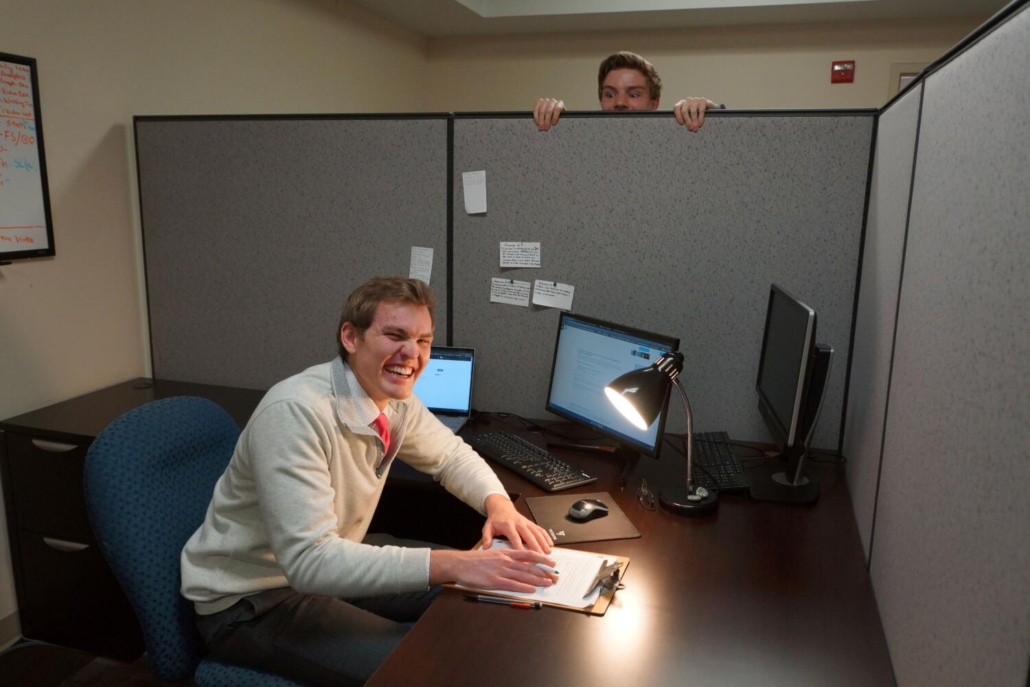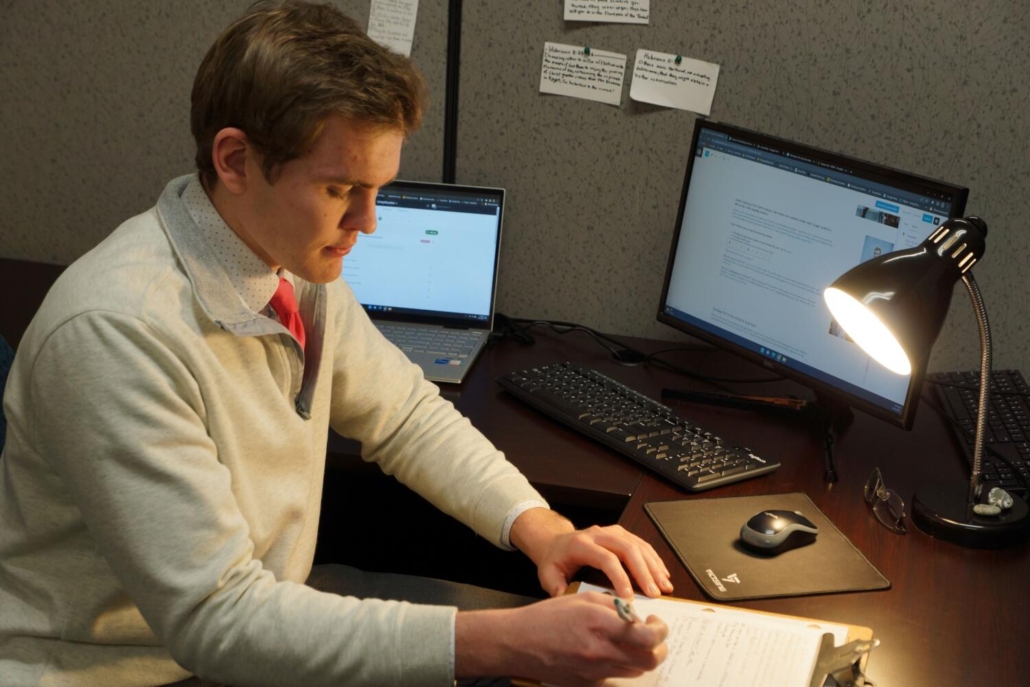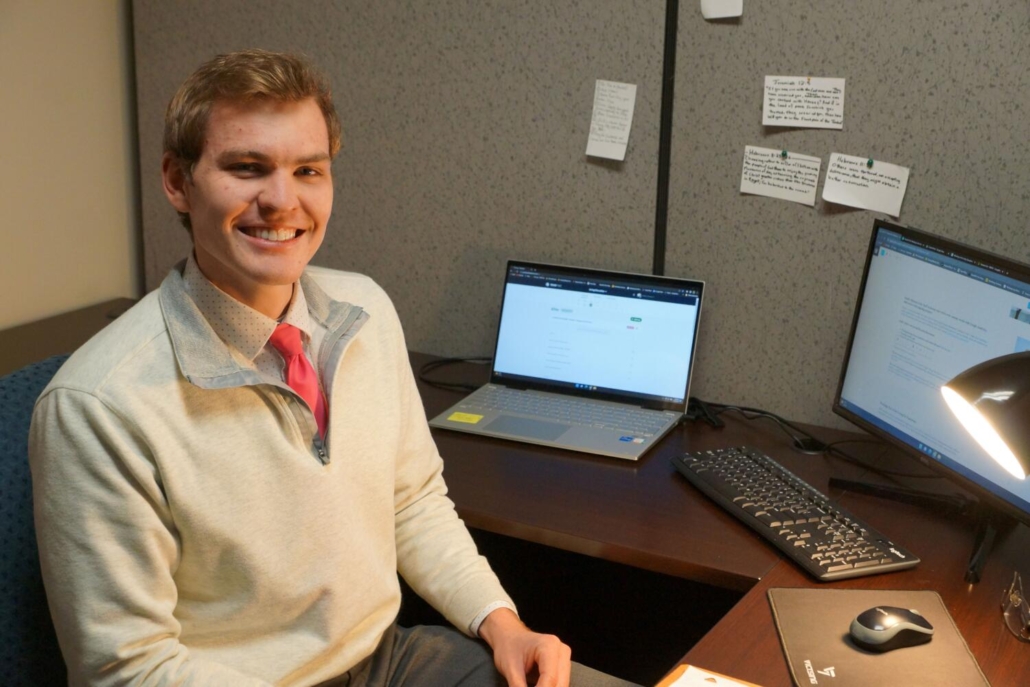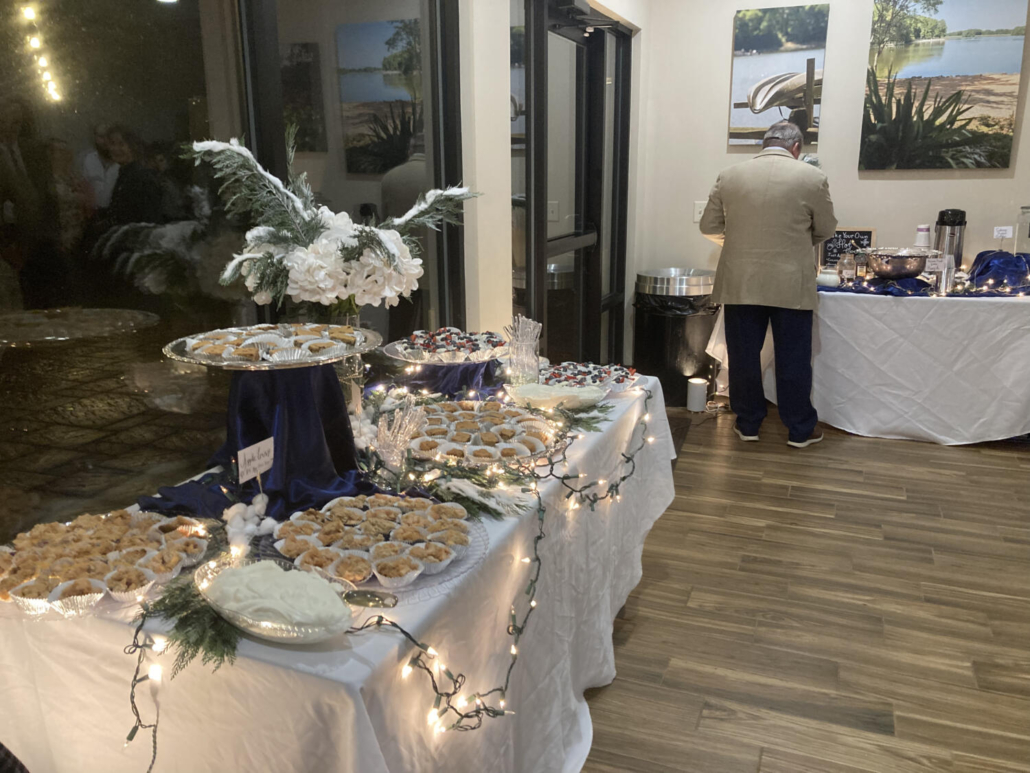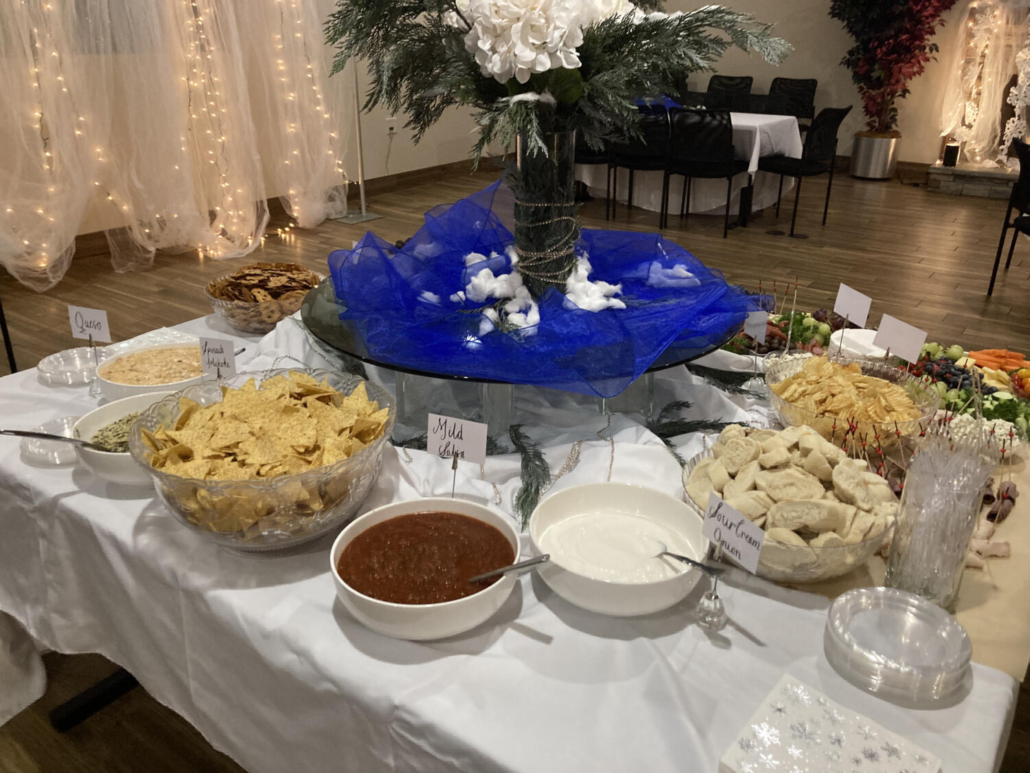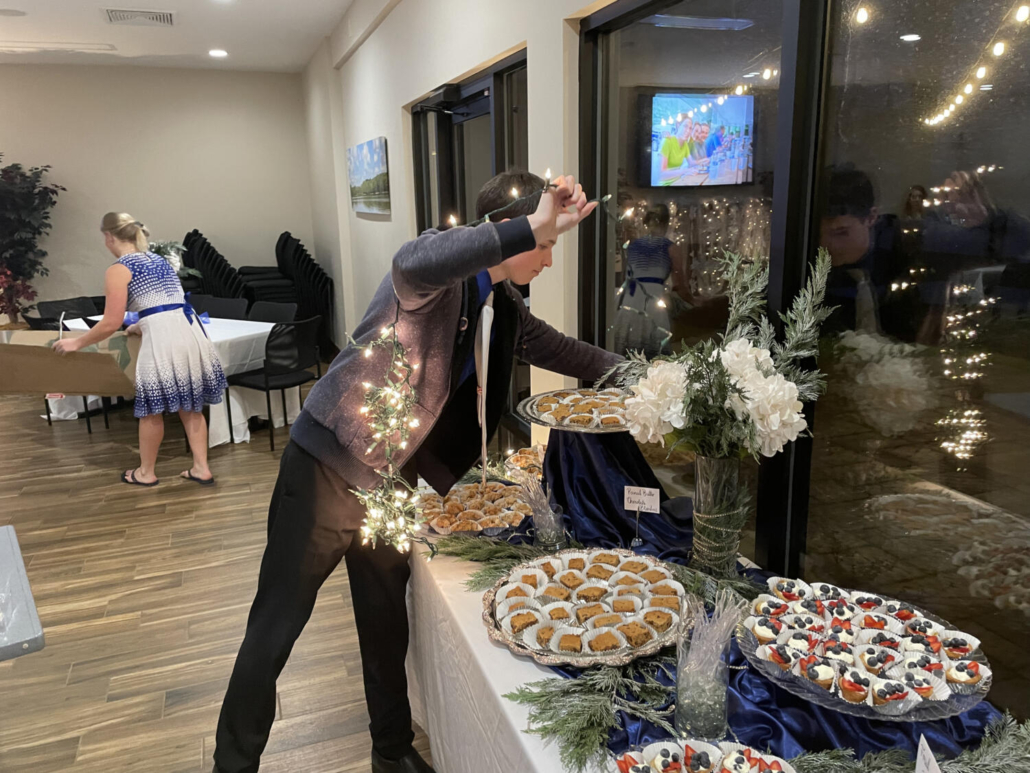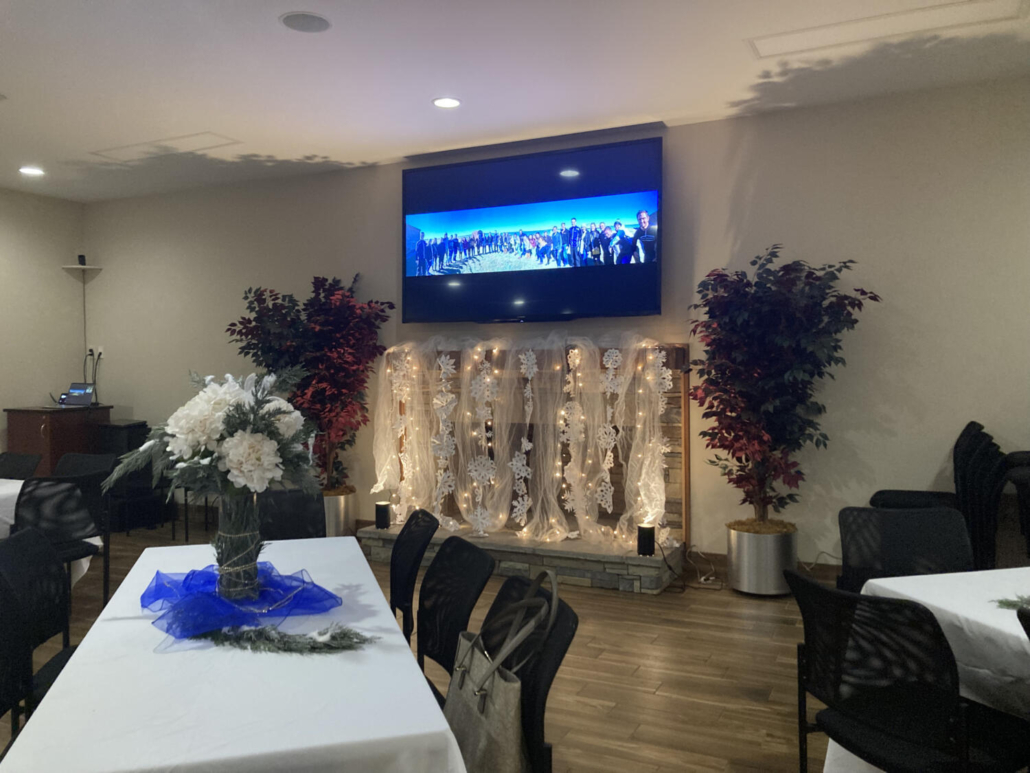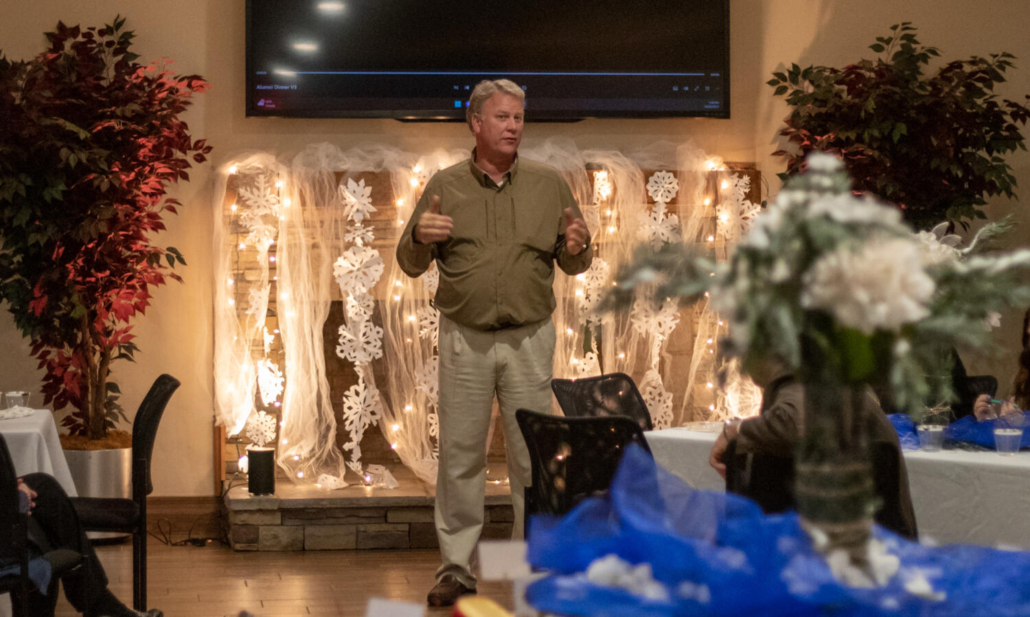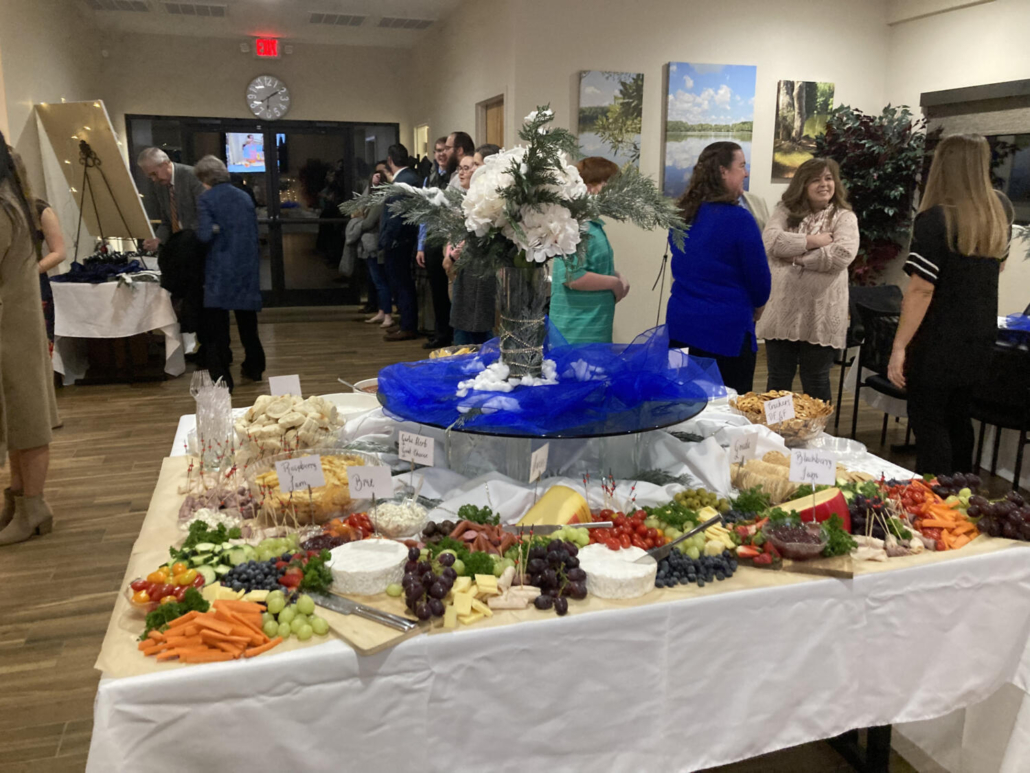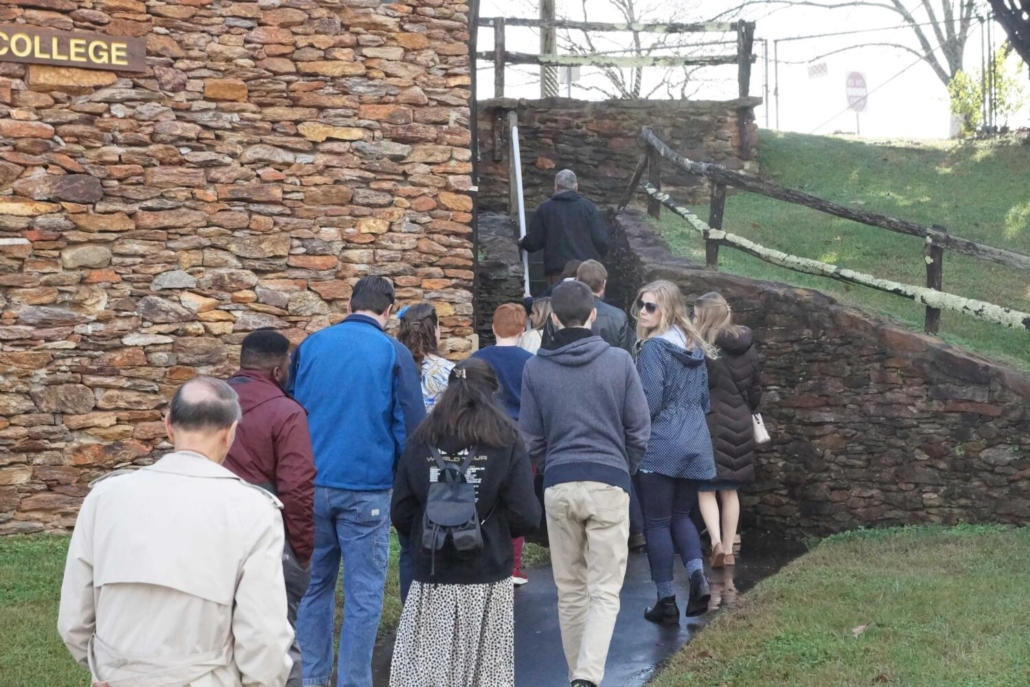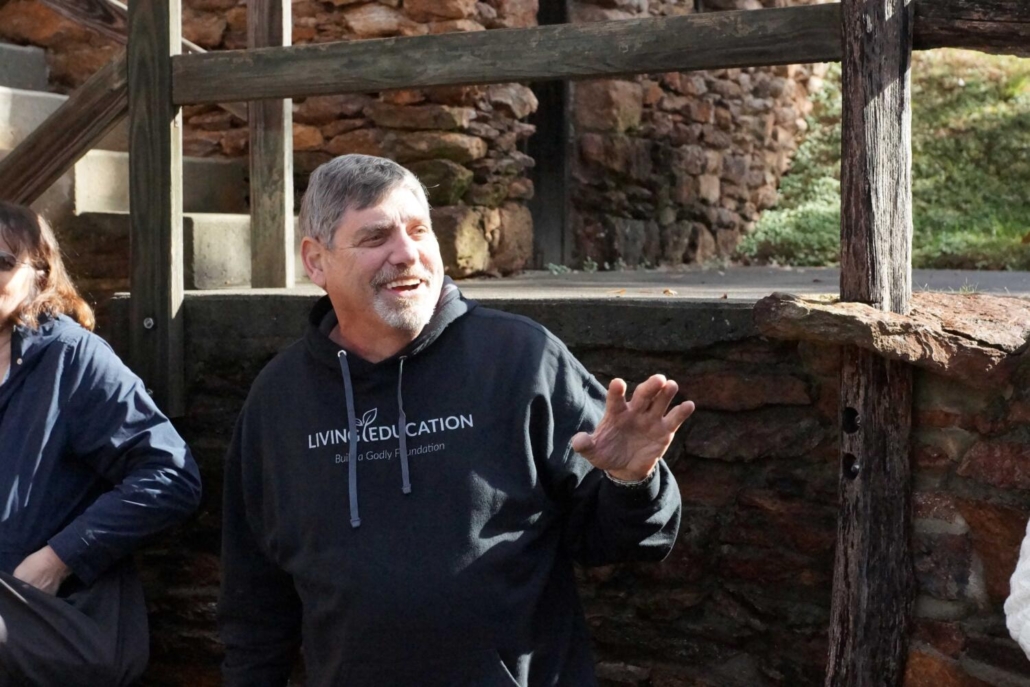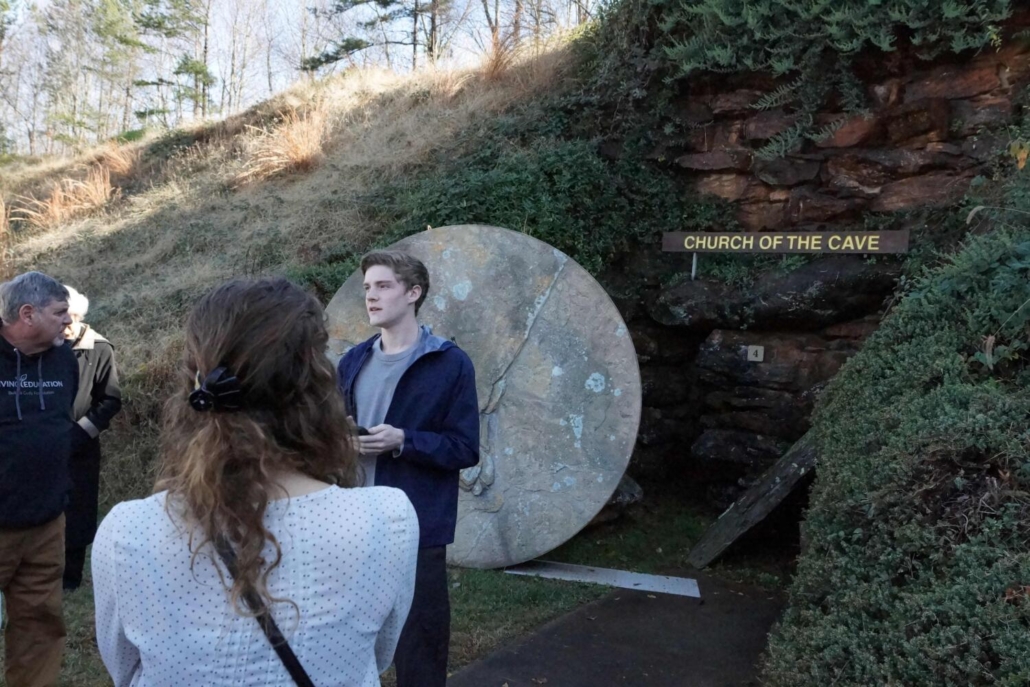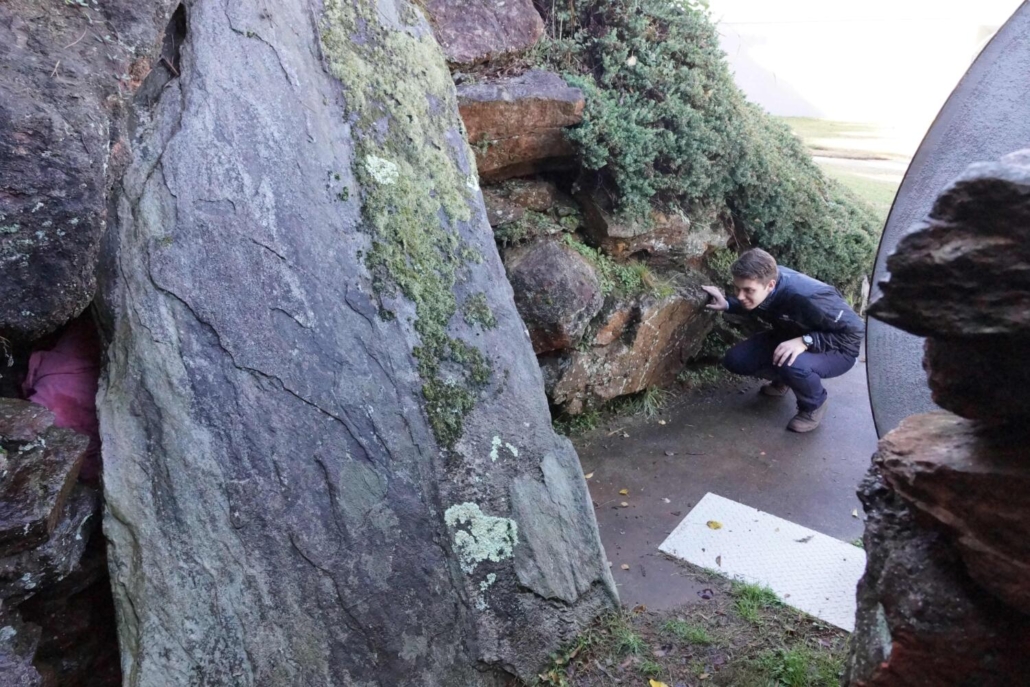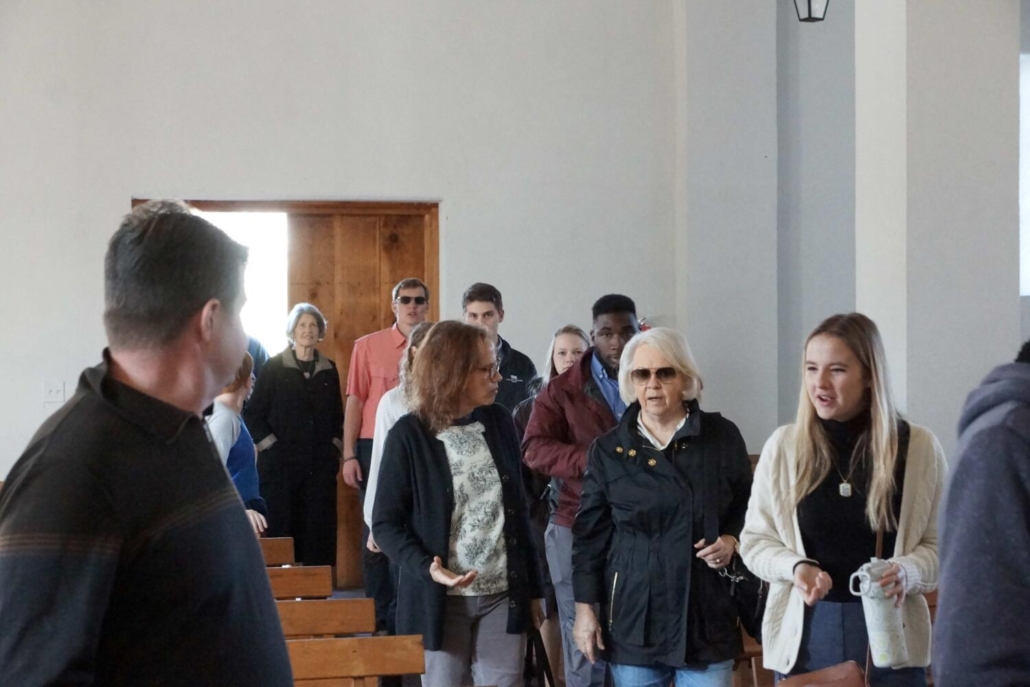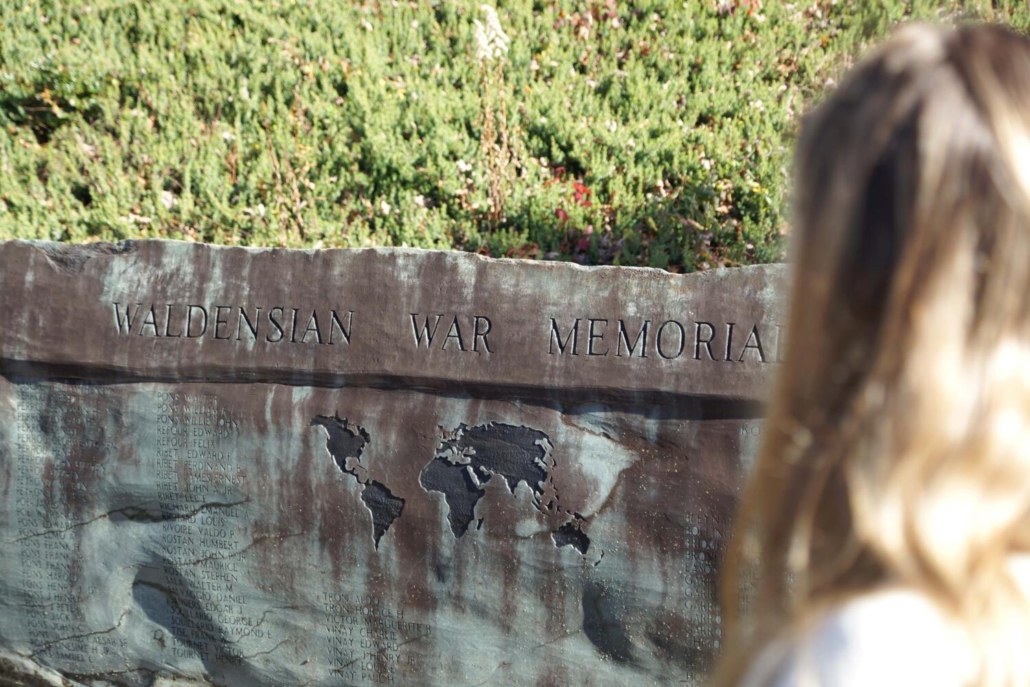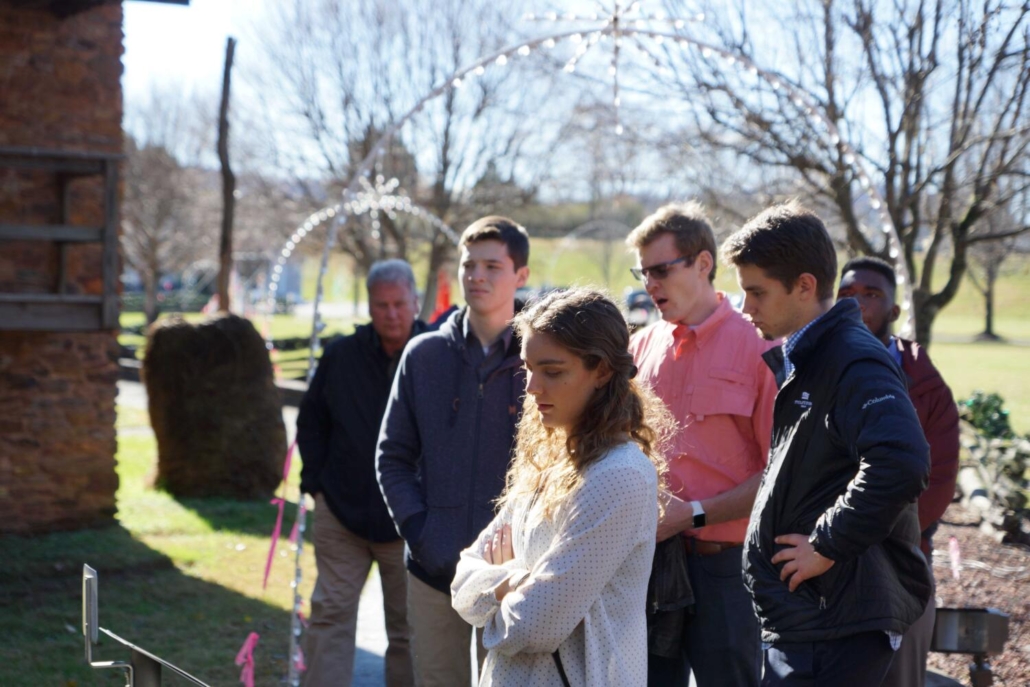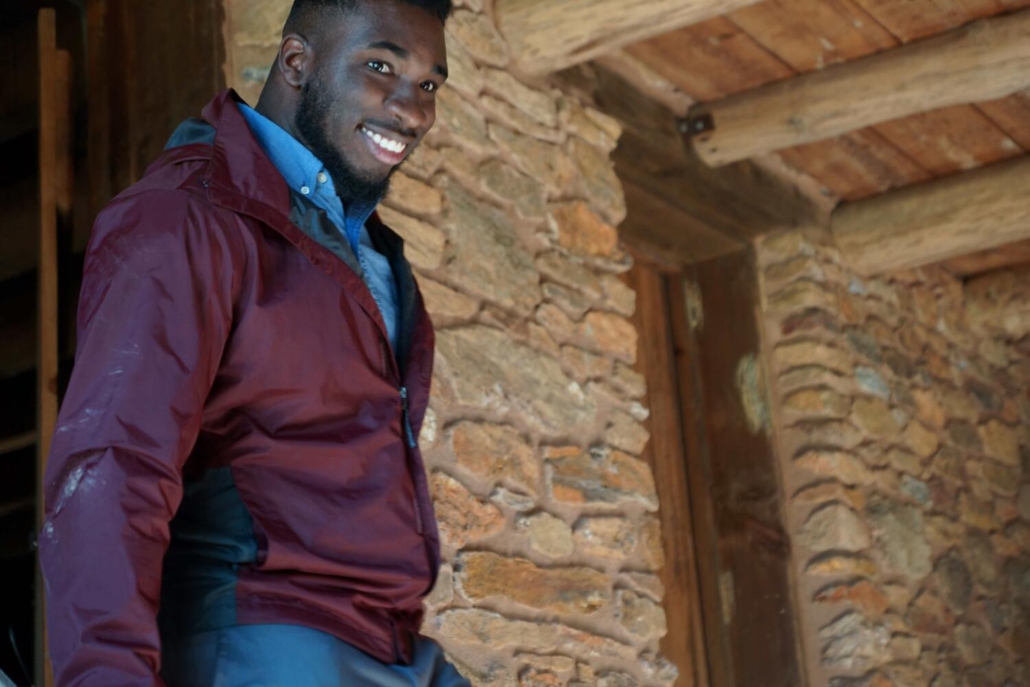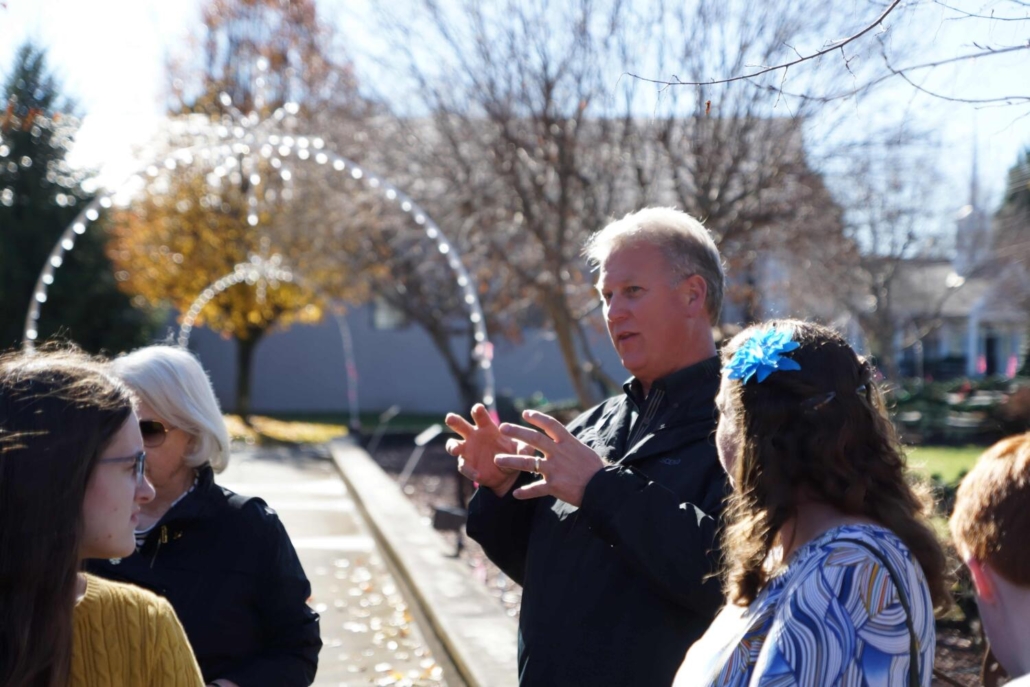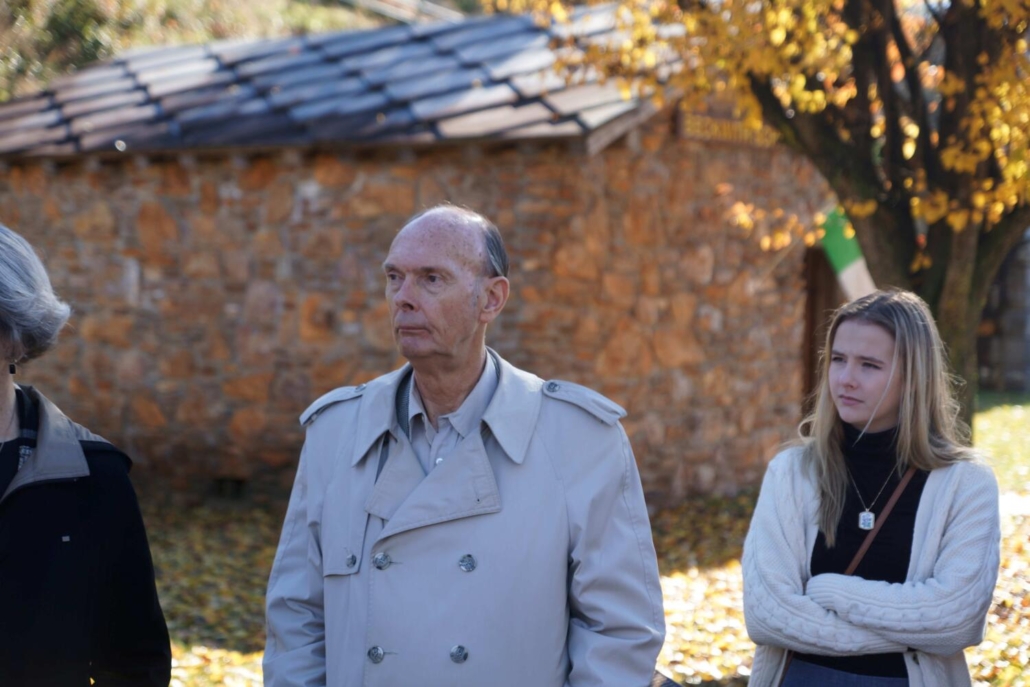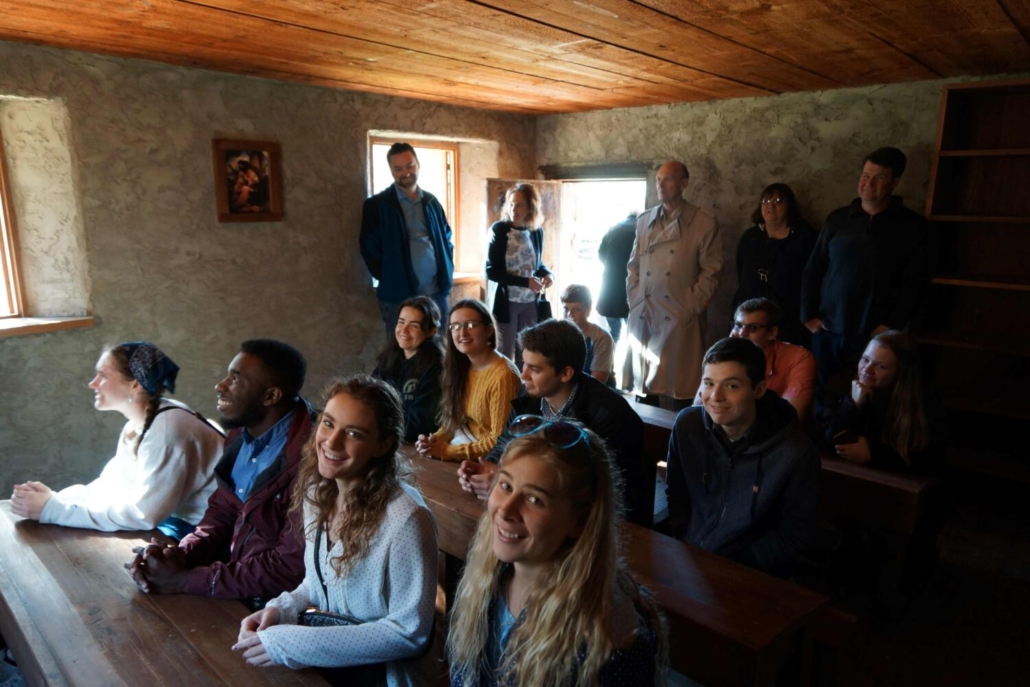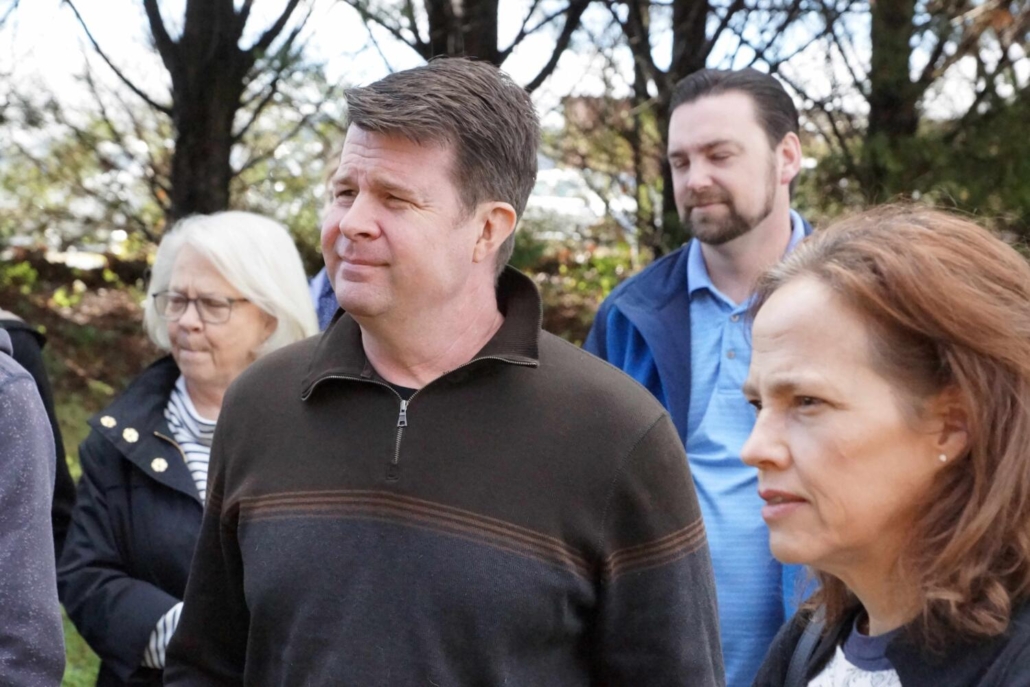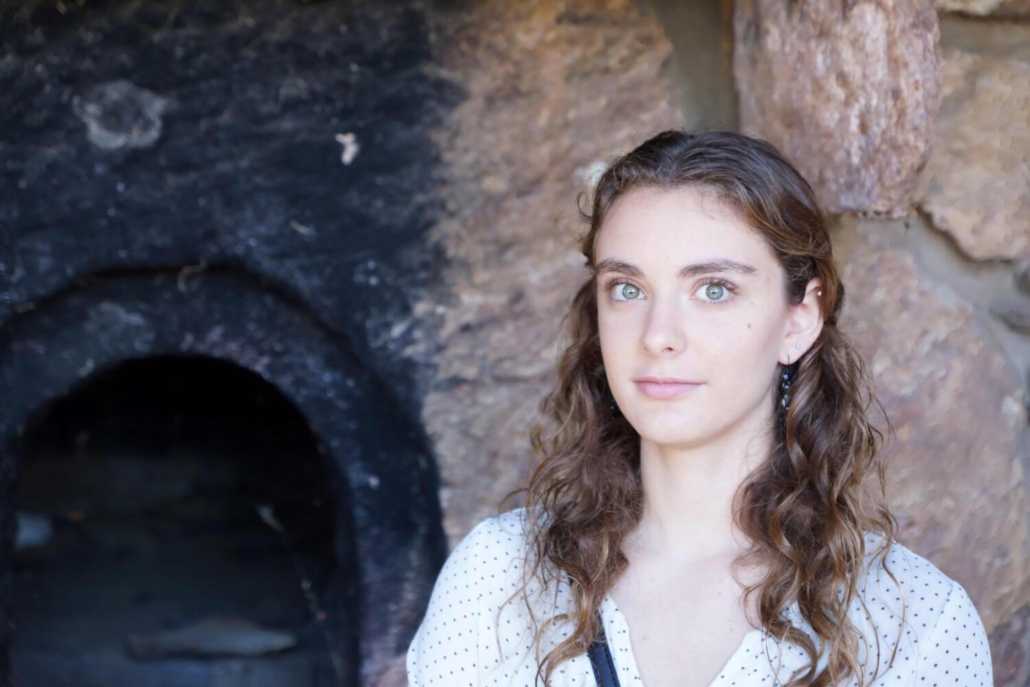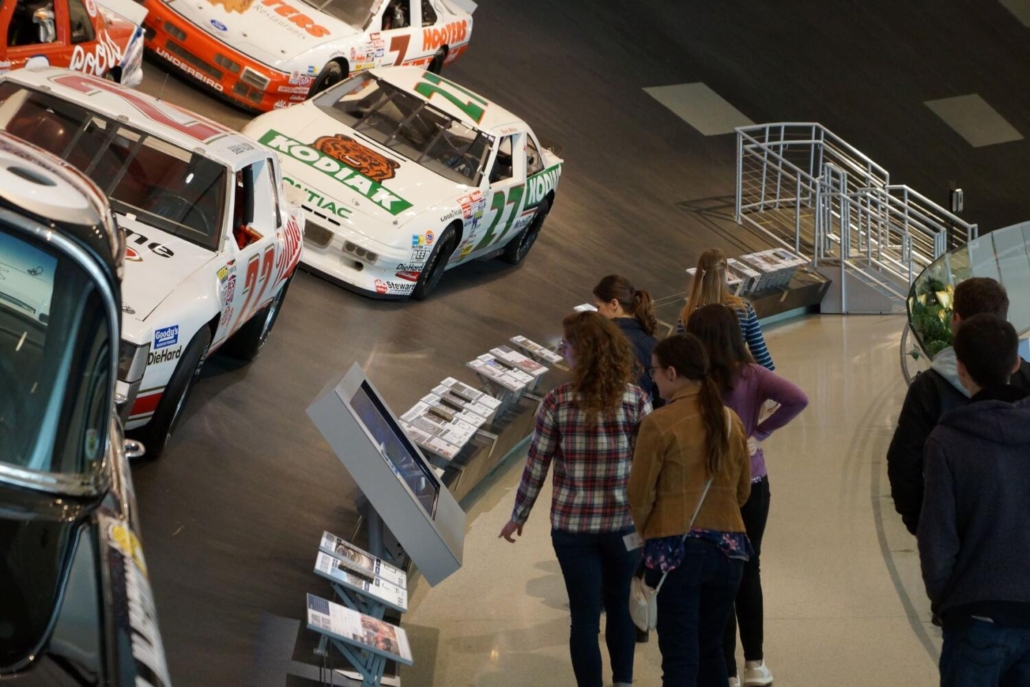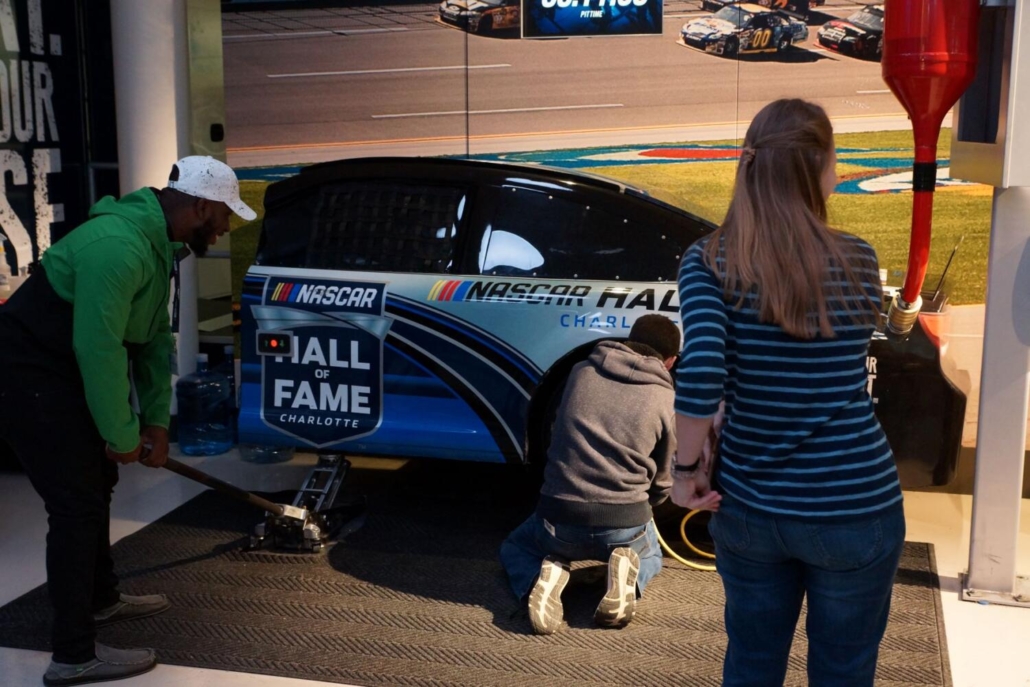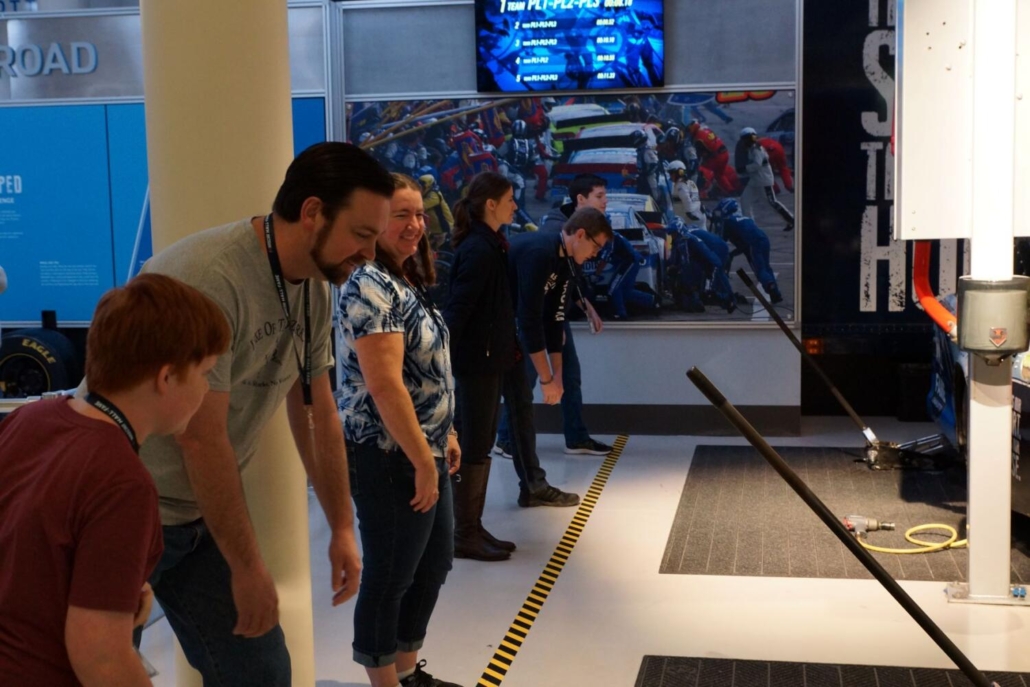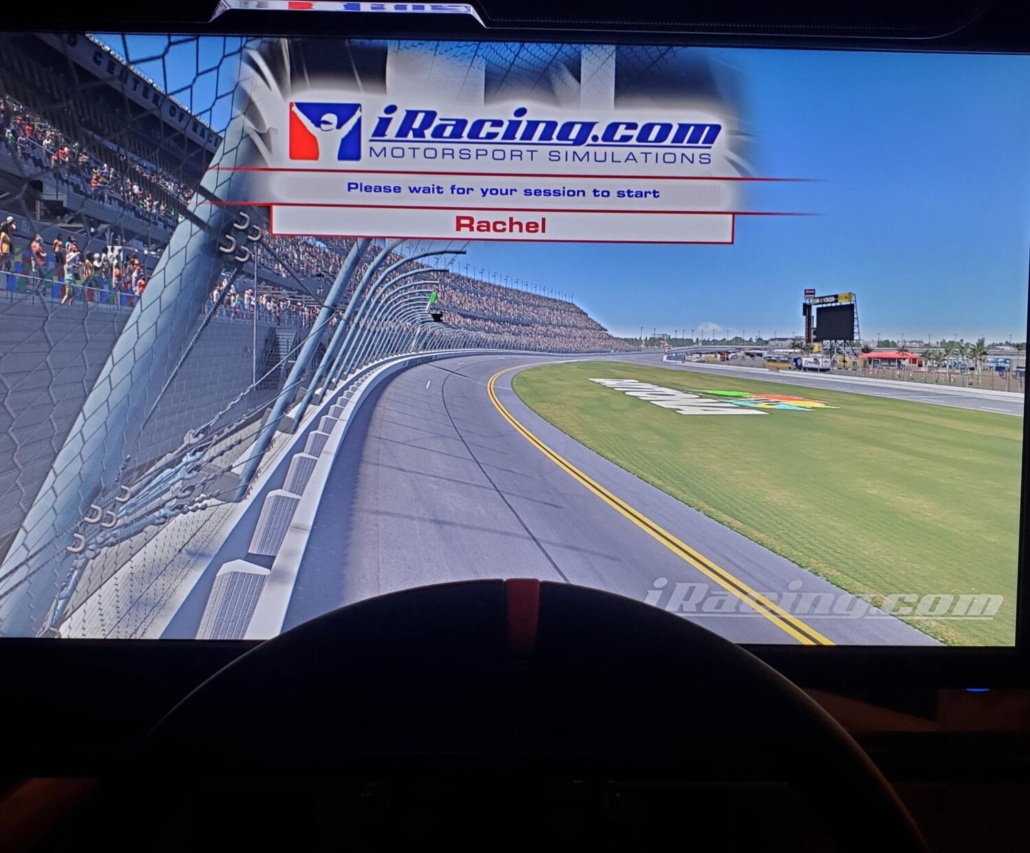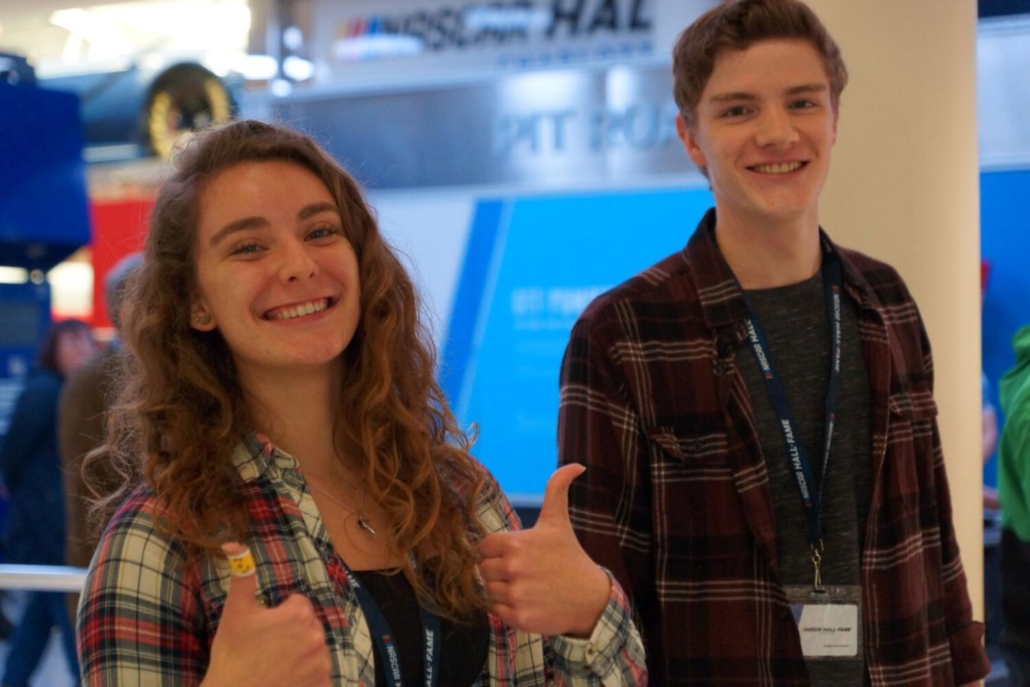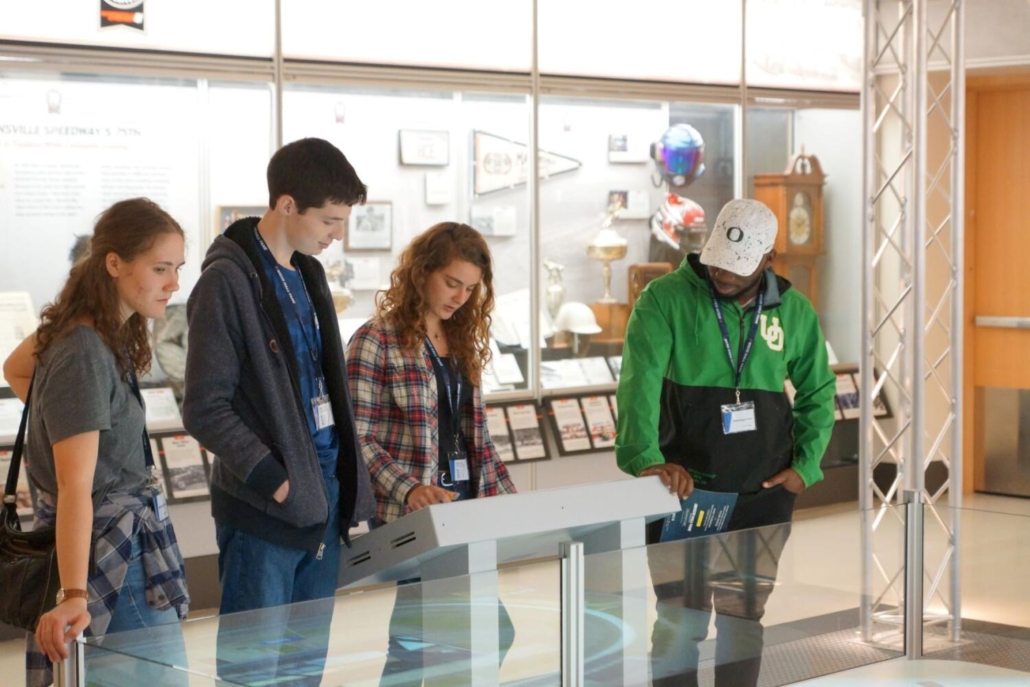It’s the Roaring ’20s Again!
Author: Kaleb Johnson | Student, Living Education – Charlotte, 2022-23
Estimated reading time: 4 min.
The Living Education students hosted a 1920s-themed dance for over 40 young adults in the local congregation.
This event was several months in the making. It began when Kezia proposed a themed dance, and what could be a more apropos theme than the ’20s? She rallied the students together to transform the guys dorm into a venue straight out of the 1920s. But what did it all look like? Let’s take a little tour.
Arrival
It is a brisk Saturday evening. You pull into a church parking lot across the street from the LivingEd. dorm. You make your way across Thompson Road and up the concrete driveway. You knock on the front door, and it swings open for you. You receive a hearty welcome from the hosts. You walk into the dorms and back in time, to the 1920s.
Welcome to the Speakeasy
The house is flooded with soft, warm light. There is a red telephone booth ahead and slightly to the right of the door, by the stairs leading to the second story. Your eyes gravitate up. There is a string of twinkle lights wrapped around the light fixture. More hang between the light above your head and the light in the living room. Another string of lights hang between the light and the telephone booth. It dangles across the top of the booth and then wraps around the handrail going upstairs.

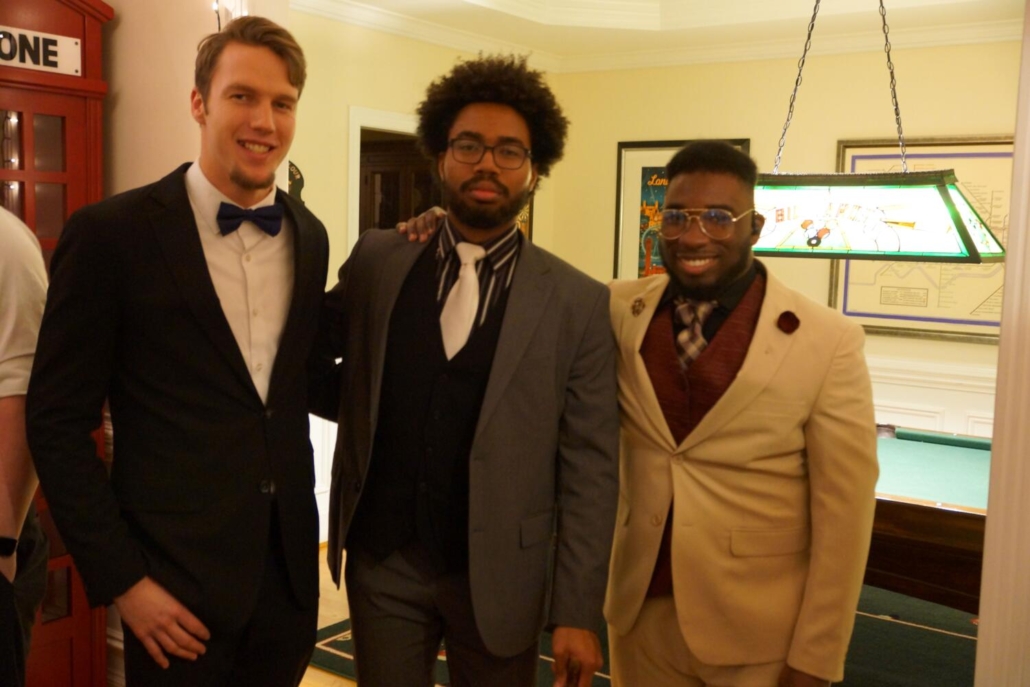
You look to the right. There is an open entrance. Hanging from the trim of this entrance are more twinkle lights, outlining the walkway. Through the opening is the billiard room. There is a pool table squarely in the middle, on which two guys and two girls are playing team 8-ball on the table. The guys are dressed in formal and nice looking dress clothes, apropos of the ’20s. The girls are wearing flapper dresses, formal gloves, and headdresses.
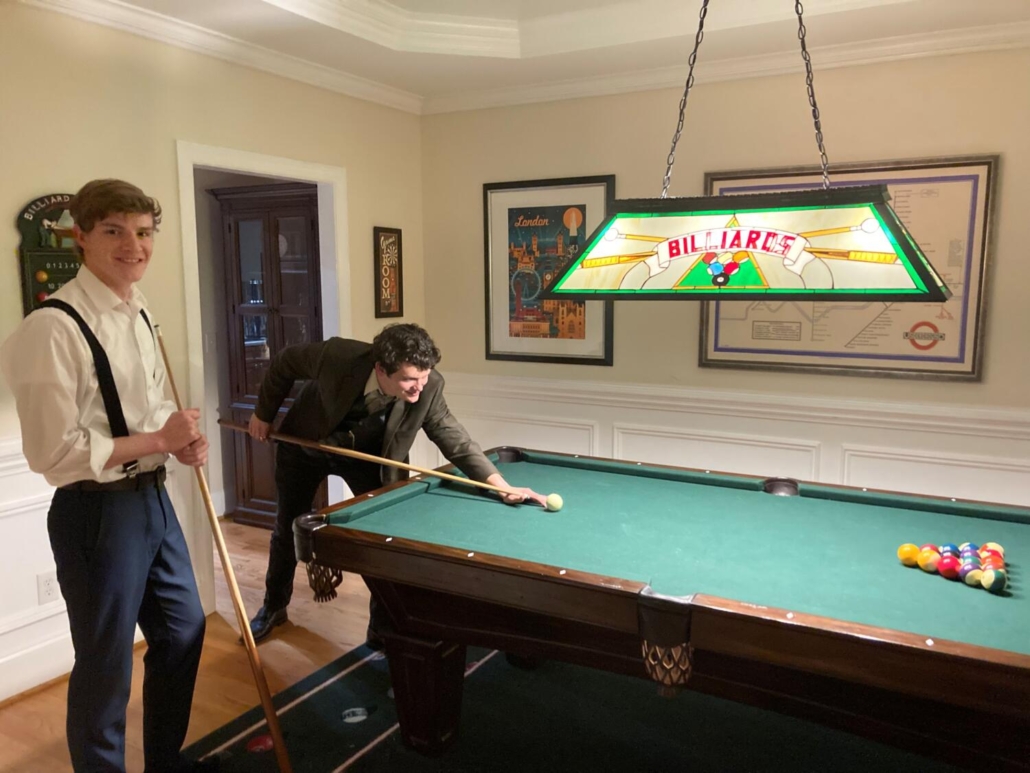
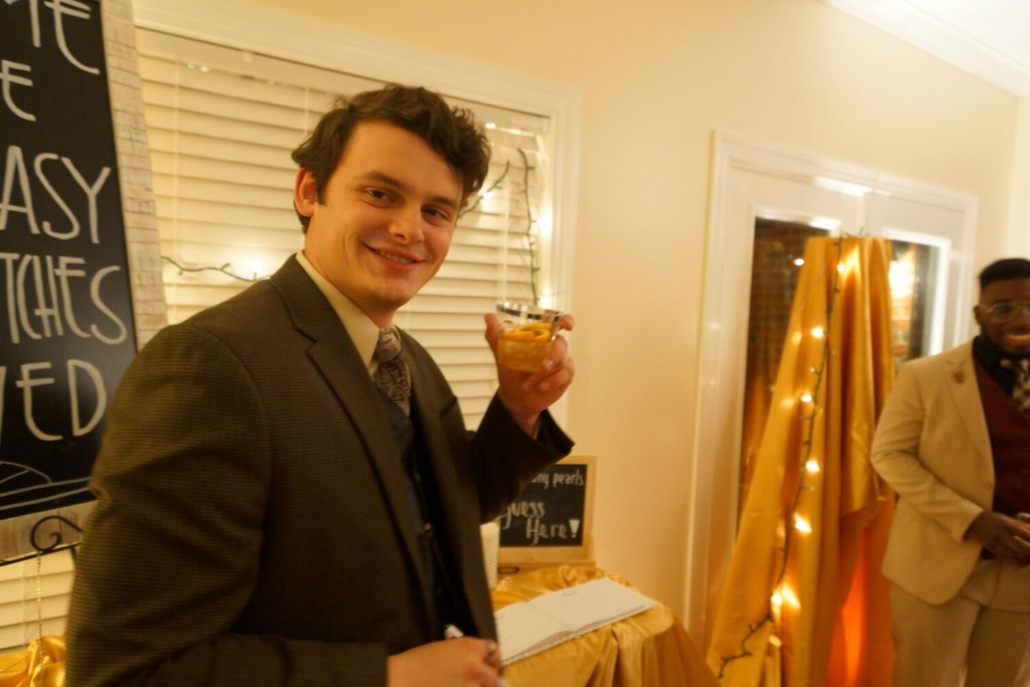
You turn to the left now. There is an entrance to a study room. Two tables are set up, and people are crowded over one. You glimpse between two people and see that they are playing some sort of card game. The room erupts in laughter and movement for some reason you can’t put together. Before you can figure it out, one of the hosts says, “The food is this way.”
There’s a Dance Floor Too
You follow them out of the hallway by the front door and into the living room. There are no couches, and it has been cleared to create a dance floor. You notice a red cloth suspended by the light. This red cloth extends from the bookshelf on the other side of the room to the light and then to the bookshelf near you. It gives the dance floor a defined shape and feeling. On the dance floor, a fair amount of people are dancing to ’20s music. You feel the limits of space in the room as you slide by the bookshelf and under the red cloth to get to the other side.
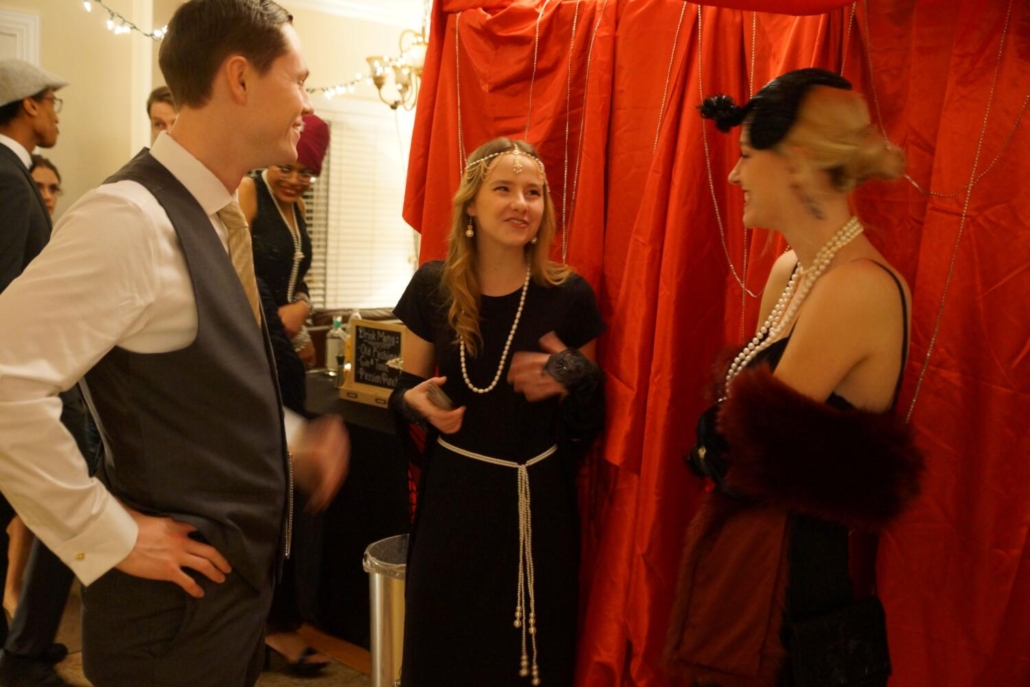
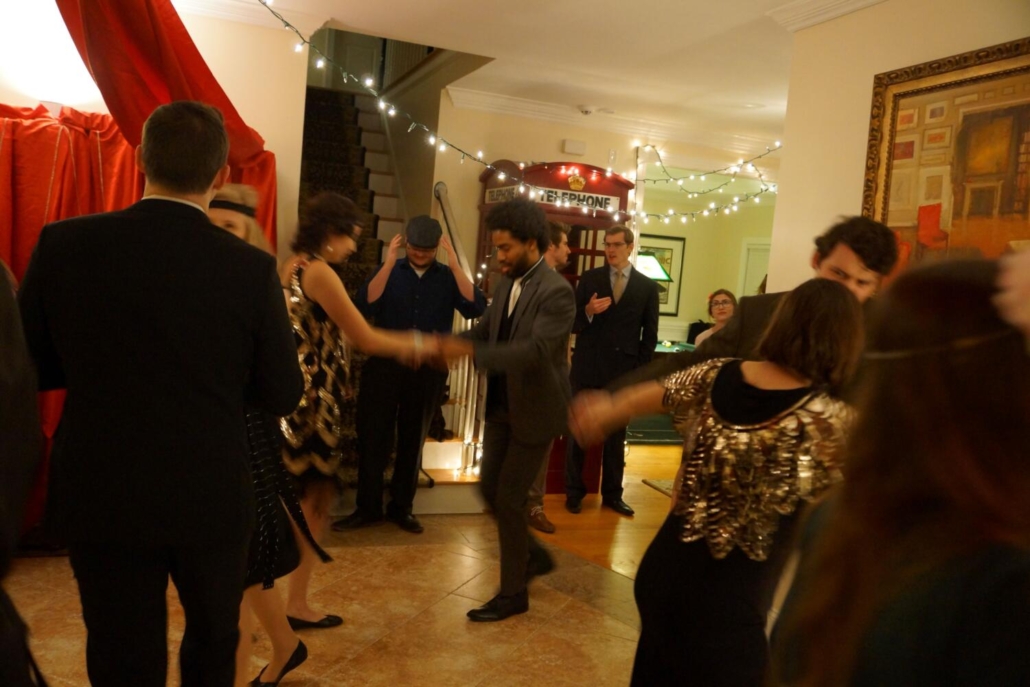
The host directs you to the patio, where you find a buffet table lavishly adorned with cloth and stocked with hors d’oeuvres. To the left of the table is patio furniture and part of a regular couch stashed to make space for the dance. The house is warm from the dancing, and the patio provides a cool (no pun intended) place to relax and get a snack.
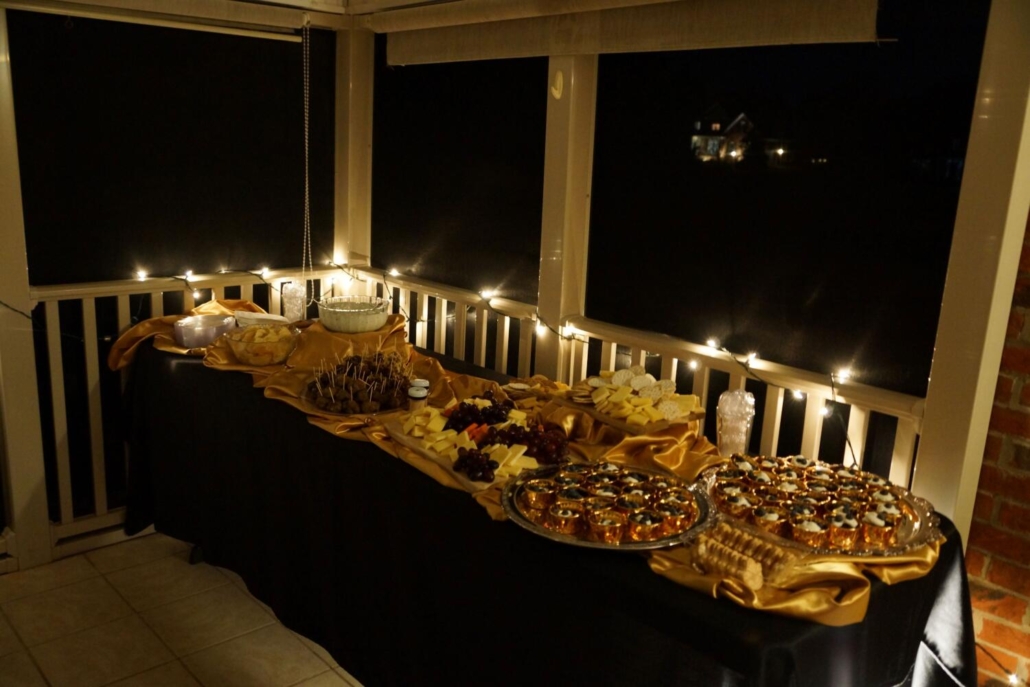
After you get a plate, you hear the dancing paused for a moment. The hostess announces a few games of trivia. The first person to say the answer gets a small prize: moon pies (in existence since 1917)! There’s questions about the most famous events of the ’20s, and prizes given out for a few rounds. Then, the dancing continues and everyone returns to their previous activities. You stick around, dancing and catching up with friends you haven’t seen for a while, even seeing people from across the country. At 9 pm, the event is not formally over, but the Living Ed students begin the process of cleaning up. You make your way out the front door, across the street, and back to the church parking lot, content with the memories you know hold.
This was not the only event at the LivingEd. dorms in January; they also did a Bingo Brunch for local widows!
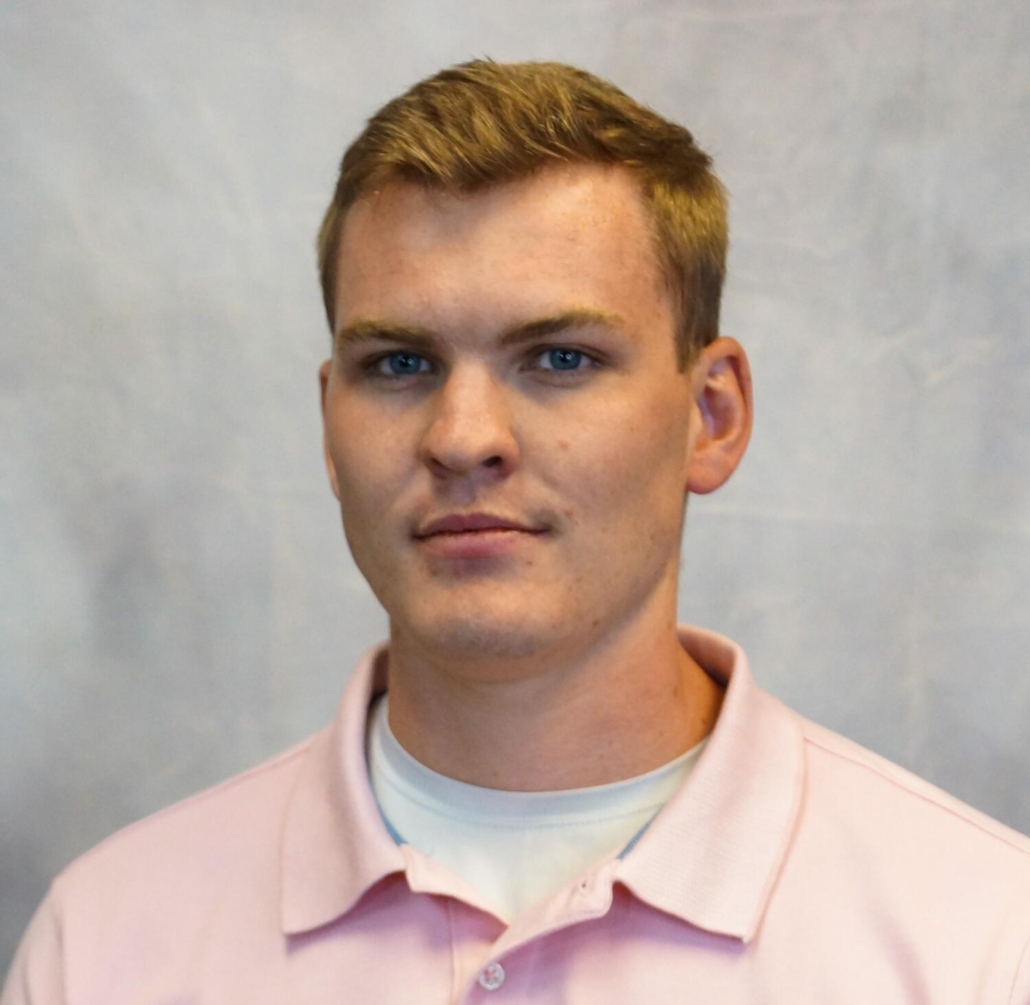
Kaleb Johnson is a student in the Living Education-Charlotte Program. He graduated with a degree in Chemical Engineering from the University of Alabama in Huntsville in the spring of 2022. In addition, Kaleb enjoys writing, video-making, trying new activities (anything and everything), playing chess, and debating (it’s not arguing!) with people. He currently works in the Living Education department producing written content & videos and helping with a variety of other projects.

